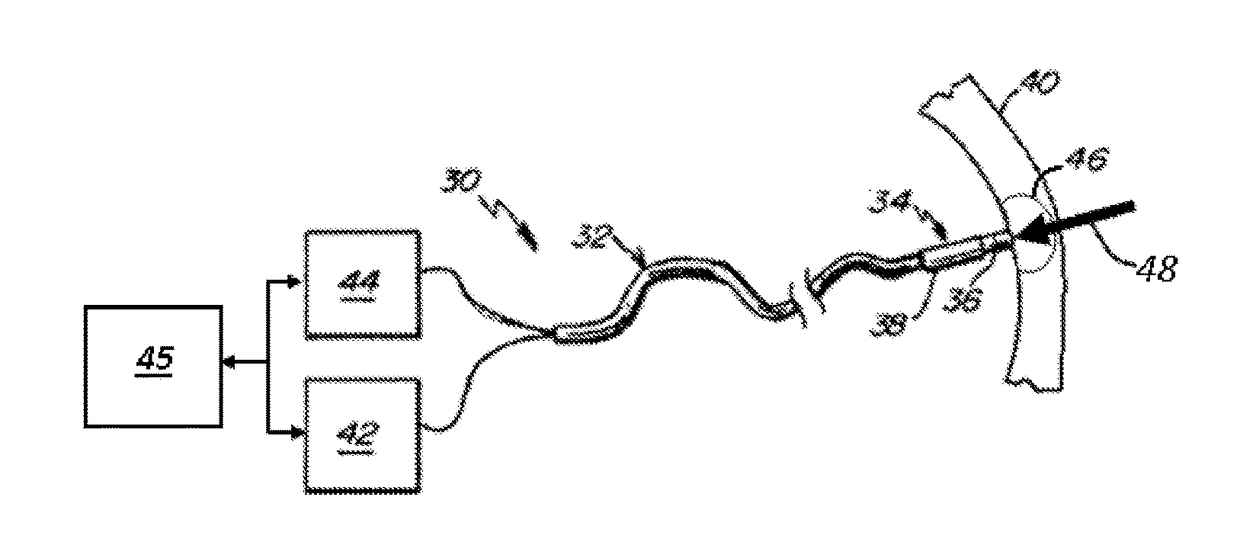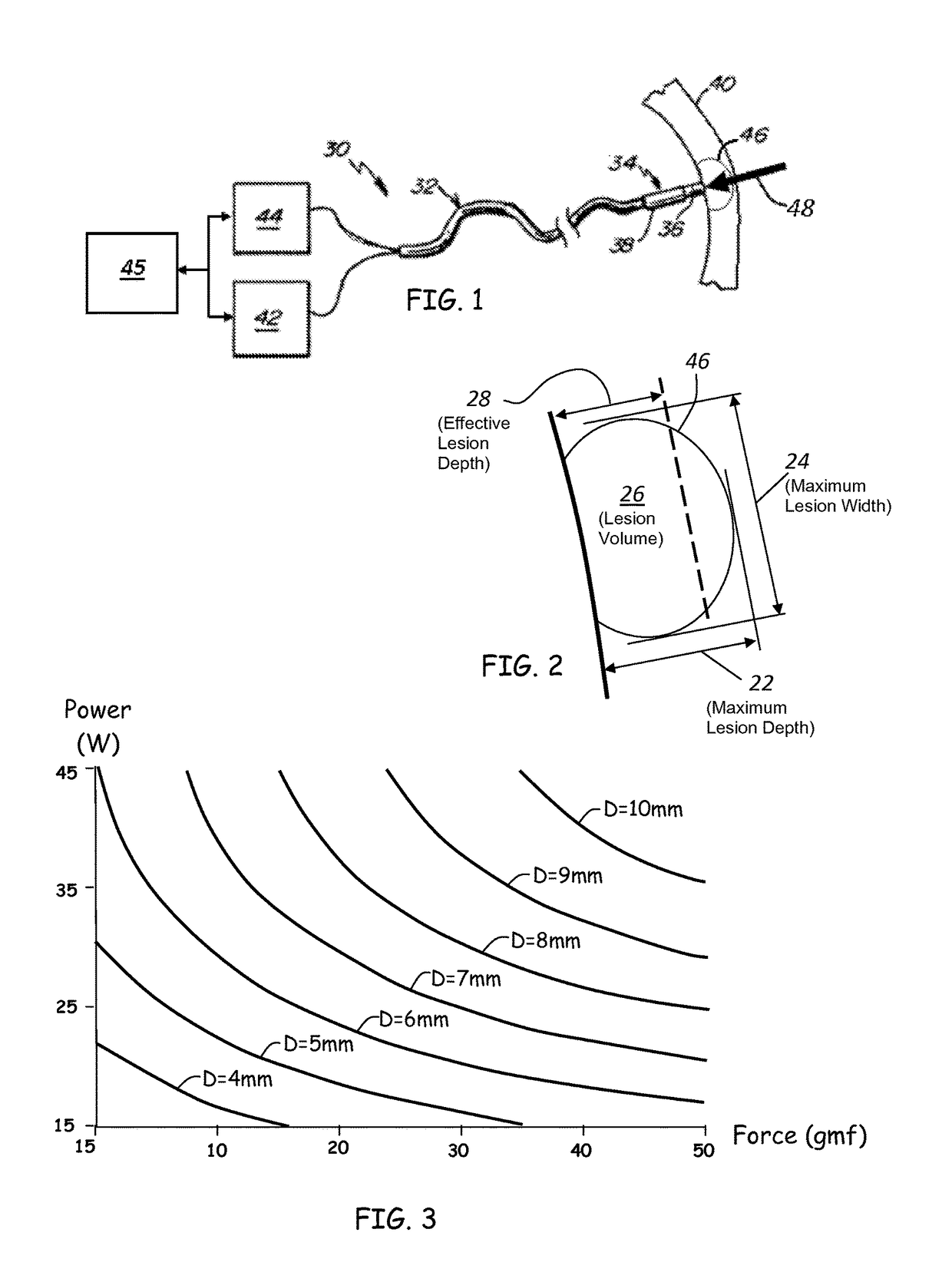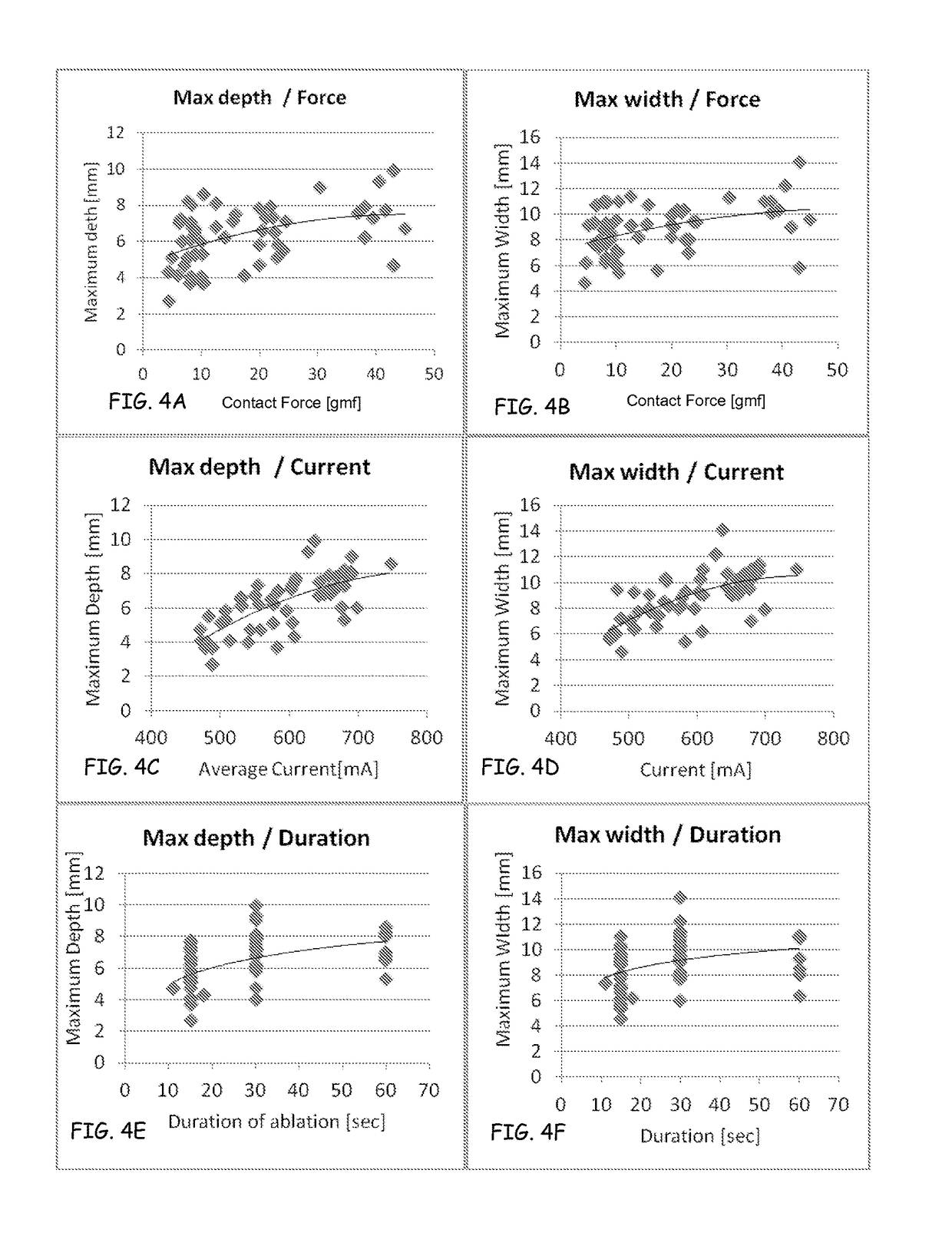Prediction of atrial wall electrical reconnection based on contact force measured during RF ablation
a technology of contact force and atrial wall, which is applied in the field of prediction and display of lesion sizes using catheter-based contact ablation delivery system, can solve the problems of blood recirculation in the atria and form clots, individuals with atrial fibrillation have a significantly increased risk of stroke, and congestive heart failure, so as to improve the integration of isolation lines and improve the accuracy of temporal and spatial proximity , the effect of effective isolation lines
- Summary
- Abstract
- Description
- Claims
- Application Information
AI Technical Summary
Benefits of technology
Problems solved by technology
Method used
Image
Examples
Embodiment Construction
[0060]Referring to FIG. 1, a contact ablation system 30 is depicted in an embodiment of the invention. The contact ablation system 30 includes a catheter 32 having a distal portion 34 comprising an ablation head 36 operatively coupled with a force sensor 38, the ablation head 36 arranged for contact with a target tissue 40. The catheter 32 is operatively coupled with a power source 42 that provides and measures the delivered energy to the ablation head 36. A measurement device 44 is also depicted, capable of sourcing the force sensor 38 and measuring an output signal from the force sensor 38. The contact ablation system 30 can also include a central controller 45 such as a computer or microprocessor operatively coupled with the power source 42 and the measurement device 44 for control thereof and for processing information received therefrom.
[0061]In operation, the ablation head 36 is brought into contact with the target tissue 40 and energized to create a lesion 46 on and within th...
PUM
 Login to View More
Login to View More Abstract
Description
Claims
Application Information
 Login to View More
Login to View More - R&D
- Intellectual Property
- Life Sciences
- Materials
- Tech Scout
- Unparalleled Data Quality
- Higher Quality Content
- 60% Fewer Hallucinations
Browse by: Latest US Patents, China's latest patents, Technical Efficacy Thesaurus, Application Domain, Technology Topic, Popular Technical Reports.
© 2025 PatSnap. All rights reserved.Legal|Privacy policy|Modern Slavery Act Transparency Statement|Sitemap|About US| Contact US: help@patsnap.com



